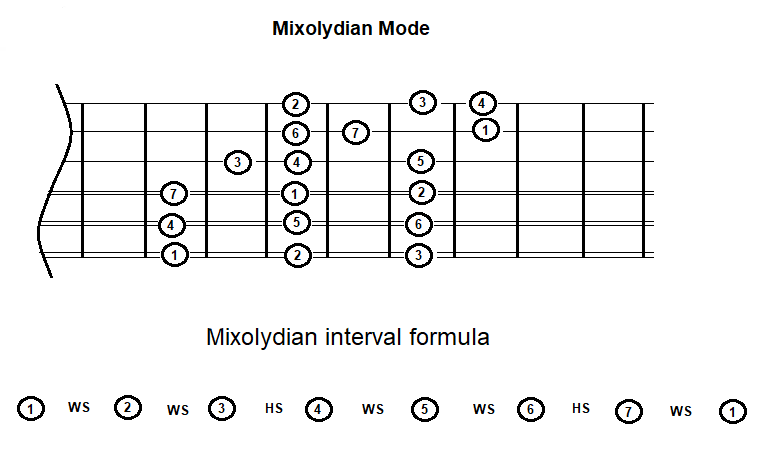You're welcome for the reply. I think any confusion you have on this issue can be cleared up by working through both of my modes tutorials.
I've seen a lot of guitar students get very confused about how modes work. The problem comes from knowing that you can think of the mode in 2 different ways: as derived from a parent scale, but also as a "scale" in it's own right.
The essential thing to focus on is how they sound different due to the interval formulas of each mode. Then you learn what shapes those interval formulas make on the fretboard. That's when my first tutorial will help.
Modes of the Major Scale
https://www.guitartricks.com/tutorial.php?input=370
Originally Posted by: HorsefleshIf I were to solo in a mode say mixalidian would the starting position be on the parent key or?
If you want the sound of the mixolydian mode then you start by learning the scale formula of the mixolydian mode & what fretboard pattern that forms.
If you only want to play the mixolydian mode then you don't need to reference it's parent key. You only need to worry about the parent scale if you are playing in some key signature in the first place, then you want to play over a chord progression or you want to modulate.
For example, G mixolydian is the 5th mode of the C major scale. But if you only want to play in G mixolydian, then you don't need to worry about thinking about C major & deriving the mode from that key, and so forth. You just play G mixolydian.
The mixolydian mode is essentially a major scale with a minor 7th instead of a major 7th scale degree. If you want to play in G mixolydian, then you find a G note & apply the interval formula of the mixolydian mode. You do this by finding a G note & then visualize the mixolydian pattern on the fretboard with the G as the root note of that pattern.
This is one possible shape the mixolydian mode forms on the fretboard. Put the 1 on G & you are playing G mixolydian (in this case on the 3rd fret of the low E string). Notice that 7th scale degree is a minor 7th from the 1 (root note). You can directly see & hear the interval formula.

This tutorial covers playing in each individual mode in great detail.
Practicing Modes of the Major Scale
https://www.guitartricks.com/tutorial.php?input=770
Hope that helps!